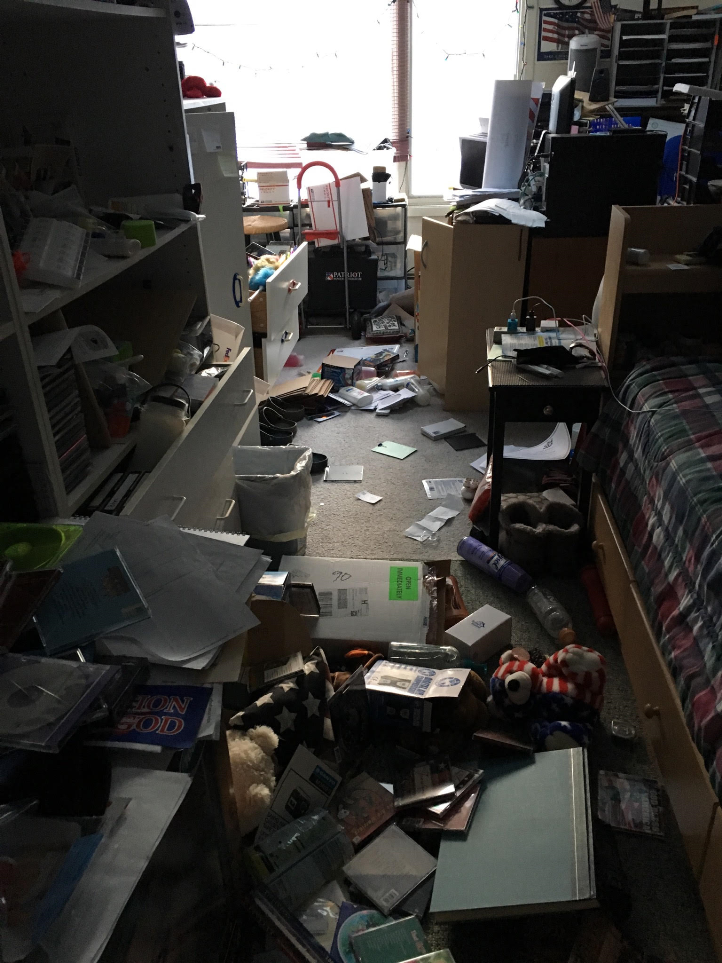All drawers and doors are open.

Posted on 11/30/2018 10:07:52 AM PST by Trump_the_Evil_Left
ANCHORAGE, Alaska -- A 6.6 magnitude earthquake has rocked buildings in Anchorage, prompting people to run out of offices and seek shelter under office desks. The U.S. Geological Survey says the earthquake was centered about 7 miles north of Alaska's largest city.
Officials issue tsunami warning for coastal areas of southern Alaska after earthquake. There was a tsunami alert for Cook Inlet, the National Weather Service in Anchorage said on Twitter.
(Excerpt) Read more at cbsnews.com ...
3 more in the last hour...good size.
Aftershocks continue since this morning. 3 good size in the last hour. 1 “jolt” and 2 “shakers”, smaller versions of the one this morning.
Hang in there, Kathy. After Northridge quake and others, there are days and days of aftershocks. Fortuantely not the strength and length of the original. My heart goes out to you and all those who must suffer through. Haven’t heard of loss of life which is the silver lining.
Thanks, ML...aftershocks all day long and into the evening. Then 2 5+ shakers. Enough already!
No, I’m sorry no location as to where the photo was taken- I came across it on Twitter.
Looks to me like asphalt; generally not reinforced.
If I ma adk...Where in relation to Eagle River are you?...my brothers in ERiver...and not a good communicator...I hear everything in house thrown from cabinets, but otherwise ok
S/b..if I may ask
I am sure it was quite a ride and plenty of infrastructure damage
250 gallon tank out in my barn for just such occasions. Thanks.

I’m south of Eagle River, in Anchorage.
I believe that picture was of Vine Road, southeast of Wasilla.
Continue south from Wasilla to Eagle River and south more for Anchorage. Eagle River folks had a tough time getting home. Bumper to bumper traffic and worries about bridges. A co-worker lives in Eagle River and was without power when she got home, but it was restored later in the day (not sure when).
Not a terrific map, but all I can find for now....Anchorage at the bottom, then work your way up to Eagle River and further up to Wasilla.
http://www.bellsalaska.com/wp-content/uploads/2016/03/Parks-Highway.jpg
There is only one road going north out of Anchorage...the Glenn Highway
I’m hanging...another shaker today...a mini version that actually stopped! I’ve not heard of any fatalities either.
I used to live in so California...been through a few goods one there.
Thank you. Hope all’s well with you.
This was listed as a 7.0 that lasted for a minute. I was in a 7.5 in Mexico City in 1957, and a 4 in the mid Atlantic in 2011? called I believe the Mineral EQ. You can see from the photos that this EQ ripped up highways and other areas. On the other hand although the 7.5 was stronger and lasted more like 1.5 minutes, Mexico City is built on a lake bed and the ground sort of rocked and swirled like a fast moving subway train. Streets were not torn and very few buildings collapsed although I saw a lot of broken windows, cracks in walls, and knocked over tall planters. A roommate said the chandelier in the living room swung so hard it hit one side of the ceiling and then over to hit the other side of the ceiling. I was sitting on the edge of the bed when the 4 hit. It was a hard shuddering motion and I could see the wall opposite me vibrating/shaking. In Mexico for weeks after I could feel the gentle vibration of aftershocks as I was lying down. After the 4, I was at my computer with a cup of water at my side. I saw the water vibrate, and a few minutes later the news reported a 2.5 quake. That also happened again a few days later. A cup or bowl of water makes a good sysmograph (sp?) of you don’t have anything fancier.
Much of that area is deep soft soil. It turns into something like jello even under the influence of a moderate earthquake. Or worse it liquifies and swallows up everything heavier than dirt...
The whole area is a basin full of deep wet soil. Soil liquefaction occurs even in a moderate earthquake and is incredibly damaging. Every unsupported slope turns into a mudslide. Anything solid atop the soil is tossed by waves of soil and will be subject to tilting, capsizing, sinking, or just breaking up from tensile stress across unsupported sections. For example most roads are build on fill which in turn distributes the load across a wider area of soil, but has no serious tensile strength. When the supporting soil moves, the fill pad can break up.
Disclaimer: Opinions posted on Free Republic are those of the individual posters and do not necessarily represent the opinion of Free Republic or its management. All materials posted herein are protected by copyright law and the exemption for fair use of copyrighted works.